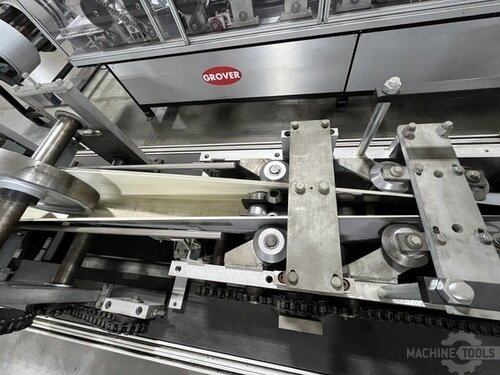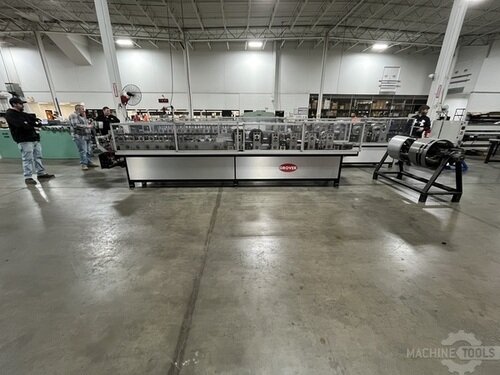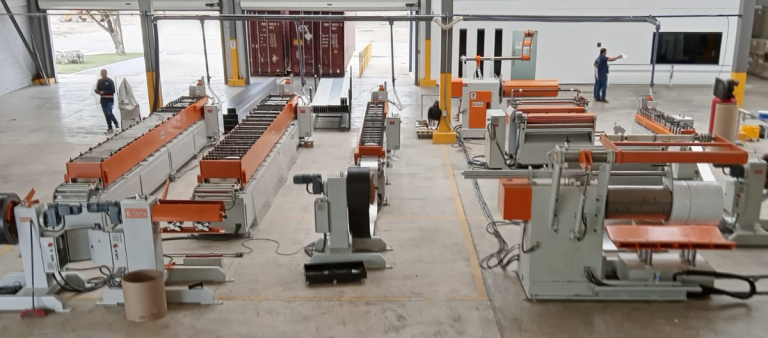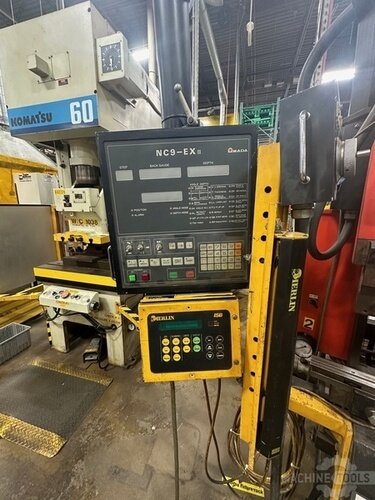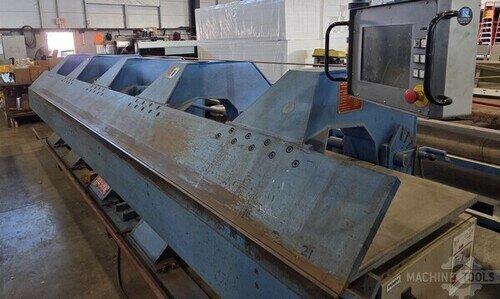Patrick O’Neill’s commitment to customer success is rooted in a hands-on approach that began in the heart of southern Chicago and now drives innovation at Mac-Tech. From the earliest days working in fabrication shops to his current role as Regional Sales Executive, Pat has built a reputation for walking the shop floor with owners, listening to their production challenges, and delivering tailored solutions. His experience spans the full spectrum of coil-fed machinery, helping roofing and metal fabrication businesses—from family-run shops to major commercial players—upgrade their lines with confidence and measurable results.
Leveraging Pat O’Neill’s Expertise: Transforming Coil-Fed Production with Downspout Roll Formers
Navigating the fast-evolving world of sheet metal fabrication demands a partner who understands both the technical and operational sides of your business. At Mac-Tech, I work directly with customers to evaluate their production needs across folders, shears, slitters, decoilers, downspout roll formers, and panel benders. Downspout roll formers, in particular, have become a game-changer for fabricators serving residential and commercial markets, offering a direct path to improved ROI and plant efficiency.
Whether you’re running a high-mix, low-volume operation or focused on commercial throughput, the right roll former can automate repetitive tasks, reduce labor requirements, and deliver consistent, high-quality downspouts. My role is to help you navigate the options, from entry-level models to fully automated systems, and ensure the machine fits your workflow and growth targets.
Evaluating Your Current Roll Forming Process: Identifying Bottlenecks and Waste
Before any upgrade, it’s essential to take a hard look at your existing process. I often start by walking the line with operators, timing each step, and mapping out material flow. Common bottlenecks I see include:
- Manual handling between slitting, forming, and folding stations
- Frequent changeovers causing unnecessary downtime
- Scrap and rework due to inconsistent forming or outdated tooling
- Excess labor tied up in tasks that could be automated
By identifying these pain points, we can target the specific areas where a new downspout roll former will have the greatest impact, whether that’s reducing waste, improving tolerances, or increasing daily throughput.
Tailoring Machine Selection to Your Fabrication Needs: Slitting, Forming, Folding, and Throughput
No two fabrication shops are identical. I guide customers through a detailed needs analysis, considering:
- Material types and thicknesses: Are you running galvanized, aluminum, or painted coil?
- Downspout profiles and sizes: Residential K-style, commercial box, or custom profiles?
- Required throughput: How many feet or units per shift?
- Integration with upstream/downstream equipment: Will the roll former work seamlessly with your slitters, decoilers, and folders?
For shops processing multiple coil widths or colors, adding an integrated slitter or quick-change tooling can minimize downtime. If folding accuracy is a concern, servo-driven folders paired with advanced roll forming lines can deliver tighter tolerances and repeatable quality—especially important for commercial contracts.
Upgrading for Maximum Efficiency: How Advanced Downspout Roll Formers Deliver ROI
The latest generation of downspout roll formers brings tangible business benefits:
- Automation: Automated feeding, forming, and cutoff reduce manual handling and operator fatigue.
- Reduced labor: One operator can often run a full line, freeing up skilled staff for higher-value tasks.
- Tighter tolerances: Servo control and precision tooling eliminate the costly scrap and rework associated with older machines.
- Higher throughput: Modern lines can produce up to 100 feet per minute, dramatically increasing daily output.
- Consistent quality: Automated systems ensure every downspout meets spec, vital for demanding commercial applications.
By quantifying savings in labor, scrap, and maintenance—and factoring in increased capacity—our customers often see ROI in 18–36 months, with ongoing gains as their business scales.
GROVER 5400 AX
Implementation Strategies: Ensuring a Smooth Transition and Lasting Performance
A successful upgrade is about more than just the machine. I work with each customer to develop an implementation plan that includes:
- Site readiness: Ensuring space, power, and coil handling are in place before delivery.
- Operator training: Hands-on instruction to maximize uptime and safety from day one.
- Ongoing support: Preventive maintenance schedules, remote diagnostics, and on-site service to keep your line running at peak performance.
- Integration: Coordinating with existing folders, shears, and material handling to create a seamless, efficient workflow.
The goal is to minimize disruption and empower your team, so you get the full benefit of your investment from the start.
Real-World Results: Case Studies in Efficiency Gains and Waste Reduction
One Midwest roofing contractor upgraded from a manual downspout operation to a fully automated roll former with integrated slitting. The result? Labor requirements dropped by 40%, scrap fell by half, and the company won new commercial contracts thanks to improved product consistency.
Another customer in the Southeast replaced three aging forming stations with a single high-speed line. Their throughput doubled, overtime costs disappeared, and maintenance headaches became a thing of the past. These are just a few examples of how the right equipment—matched to your specific needs—can transform your bottom line.
Frequently Asked Questions
When is the right time to upgrade a roll former or folder?
If you’re experiencing frequent breakdowns, excessive scrap, or struggling to keep up with demand, it’s time to consider an upgrade. I recommend evaluating your maintenance logs and production metrics—when downtime and repair costs start eating into your margins, investing in new technology pays off quickly.
How do servo-driven folders compare to hydraulic systems?
Servo-driven folders offer faster cycle times, greater accuracy, and lower maintenance compared to traditional hydraulic systems. They’re ideal for shops that need tight tolerances and rapid changeovers, especially in high-mix production environments.
What’s the difference between a combi-beam and double folder?
A combi-beam folder allows for both straight and radius bends without tool changes, adding flexibility. Double folders can perform both up and down bends in a single setup, which speeds up complex panel production and reduces handling.
What are signs a roll forming line is no longer cost-effective?
Watch for growing maintenance costs, inconsistent product quality, slow changeovers, and high scrap rates. If your current line can’t keep up with demand or is limiting your ability to take on new work, it’s time to explore modern alternatives.
Can I integrate a new downspout roll former with my existing equipment?
Absolutely. We specialize in turnkey integration, ensuring your new roll former works seamlessly with decoilers, slitters, folders, and downstream handling systems. I’ll walk you through the process and coordinate with your team every step of the way.
How do I calculate the ROI for a new roll former?
I use a combination of your current labor, scrap, and maintenance costs, plus projected increases in throughput and quality. Most customers see payback in 18 to 36 months, with significant ongoing savings and new revenue opportunities.
What support does Mac-Tech offer after installation?
We provide comprehensive training, preventive maintenance, remote diagnostics, and on-site service. My team is always available for troubleshooting, upgrades, or process optimization—your success is our priority.
If you’re ready to evaluate your options or want an expert walkthrough of the latest downspout roll formers, I invite you to reach out directly—whether you’re considering a simple upgrade or a full line overhaul. Let’s work together to maximize your ROI, streamline your operations, and set your business up for long-term success. Call me at 414-232-7929 or email pat@mac-tech.com to get started with a demo or personalized quote.
Get Weekly Mac-Tech News & Updates

